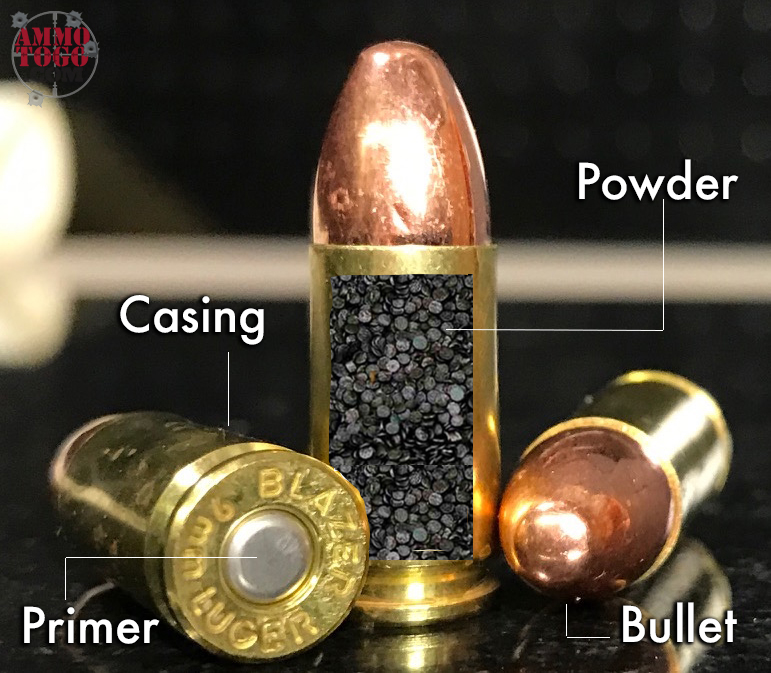Ammunition Pro Llc Fundamentals Explained
Ammunition Pro Llc Fundamentals Explained
Blog Article
Some Known Facts About Ammunition Pro Llc.
Table of ContentsAbout Ammunition Pro LlcThe 8-Second Trick For Ammunition Pro LlcThe Only Guide to Ammunition Pro LlcUnknown Facts About Ammunition Pro Llc8 Simple Techniques For Ammunition Pro Llc
The fundamental components of ammunition are the exact same for rifle, gun, and shotgun ammo. Today we're looking at the what the fundamental parts of ammunition are and exactly how they function with each other to discharge a round.It houses the primer and powder. The bullet is seated in the open end of the instance. When you discharge a bullet out of a semi-auto weapon, the gun's extractor raises the situation from the firing chamber and it flies out of the gun. The instance is also often described as shells, brass, or cases.
A weapon's shooting pin strikes a cartridge's guide. The primer is situated in the rim of the situation of a rimfire cartridge.
Getting My Ammunition Pro Llc To Work
Both common sorts of primers in centerfire cartridges are Berdan and Boxer primers. Gunpowder next to the instance that usually contains it. Powder, likewise known as propellant or gunpowder, is a fast-burning chemical mix. The guide surge ignites it. It is generally a mix of saltpeter, charcoal, and sulfur.

We call the projectiles for shotshells, which we discharge through shotguns, slugs and shot. Currently that you have a standard understanding of the standard parts of ammunition, you can really feel a little extra confident in how your gun and ammunition feature!.
More About Ammunition Pro Llc
Stay on top of Unique Offers, Development Notice of Sales, and Store Events
Fun reality: Grains are used to explain the mass of a bullet due to the fact that all the method back in the early days of firearms, it was a dispenser's unit of measurement, and an usual measure was needed to determine just how much result in use to make actors lead bullets (Ammunition Pro LLC). 'Grains' as a device of measure for weight copulates back to old times, and stands for the weight of a grain of wheat
(https://www.earthmom.org/retail-salesperson/ammunition-pro-llc)For referral, the weight of a paper clip has to do with 16 gr. We understand that grains are a step of mass, and more = much heavier, and heavy is great? Yes, hefty is good, yet mass of the projectile isn't the only thing you need to take into consideration when picking a round for your gun.
The Buzz on Ammunition Pro Llc
This spin is produced by grooves reduced or hammered into the inside of the barrel, which are referred to as 'rifling'. Fun fact, this is the beginning of the term "Rifle" ex lover. A rifled musket vs. smoothbore musket. The impact this spin has on projectiles is a supporting one the bullet rotating maintains the nose directed right, similarly that a completely spiraled football throw is mosting likely to be a lot more stable and accurate in flight than an awful duck, end over end toss.
Just how does this associate to grain weight? Picture you're on one of those play area carousels, the ones with bars you hold on to while it spins.
Or when it comes to the circus trip, you begin to feel much heavier. The even more mass you have (weight), the a lot more you will certainly feel this impact. The exact same effect takes place with bullets. The larger the projectile, the even more impact a quicker rotate will have on it. This is why you tend to see slower twist prices for larger, slower projectiles, and quicker spin rates for lighter, higher speed projectiles.
The 4-Minute Rule for Ammunition Pro Llc
Yet there's another factor that we need to take into consideration when selecting a grain weight for our ammunition. As hinted at above, bullet speed, or the speed of the projectile, is a major variable when identifying the finest grain weight projectile to utilize. Velocity is impacted by a few significant elements, consisting of the kind and amount of propellant (gunpowder), barrel size, and bullet weight.

One of the most typical grain weight rounds for 9x19mm cartridges are 115gr and 124gr. These are typically lead core, completely jacketed (FMJ) rounds. Both of these grain weight cartridges will carry out well in manufacturing facility 9mm handguns, to typical handgun ranges (up to 50 yards). 115 grain rounds are one of the most usual (and therefore least costly).
Report this page